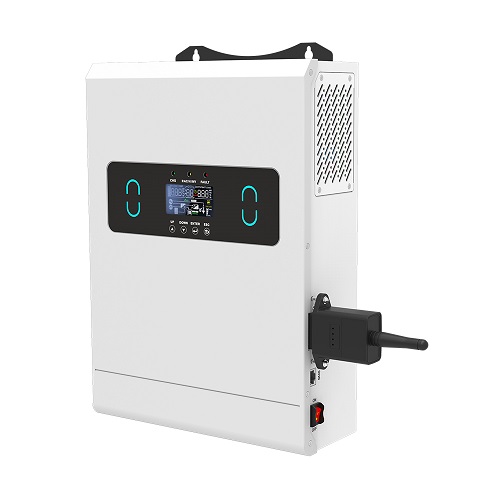An On Grid Solar Inverter plays a critical role in converting direct current (DC) from solar panels into alternating current (AC) that can be used by home appliances or fed back into the utility grid. Since these inverters are directly connected to the public power grid, they must include a variety of safety features to protect the system, its users, and the grid itself.
1. Anti-Islanding Protection
- Purpose: Prevents the inverter from continuing to send electricity to the grid during a power outage.
- Why it matters: This feature is crucial to protect utility workers who may be repairing the grid and could be endangered by back-fed electricity.
- How it works: The inverter continuously monitors grid conditions and automatically shuts down if it detects a loss of grid power.
2. Overvoltage Protection
- Purpose: Protects the inverter and connected appliances from voltage spikes.
- Functionality: The On Grid Solar Inverter includes voltage sensors that disconnect or reduce output if the voltage exceeds safe limits.
- Benefit: Prevents damage due to irregularities in power supply or grid faults.
3. Short Circuit Protection
- Purpose: Detects and isolates faults caused by short circuits.
- Importance: Short circuits can result in fire hazards and serious equipment damage.
- Implementation: The inverter stops operation instantly when a short circuit is detected to avoid further harm.
4. Ground Fault Detection
- Purpose: Identifies unintended paths for electricity to ground, which can lead to electric shock or fires.
- Working Mechanism: The inverter monitors for any imbalance between current flowing to and from the solar array.
- Action: Automatically shuts down or alerts users when a ground fault occurs.
5. Surge Protection
- Purpose: Shields the inverter from lightning strikes or other transient surges.
- Components: Typically includes Metal Oxide Varistors (MOVs) and other surge-protection devices.
- Outcome: Increases the lifespan and reliability of the On Grid Solar Inverter by mitigating surge-related damage.
6. Temperature Monitoring and Overheating Protection
- Purpose: Ensures that the inverter operates within a safe temperature range.
- Method: Built-in sensors detect internal temperatures, and the system adjusts output or shuts down when overheating is imminent.
- Additional Features: Some models include cooling fans or heat sinks to dissipate excess heat.
7. Reverse Polarity Protection
- Purpose: Prevents damage when the DC input from solar panels is connected incorrectly.
- Design: The On Grid Solar Inverter uses diodes or circuit logic to detect and block incorrect connections.
- Advantage: Enhances user safety and protects both the inverter and the solar array.
8. Grid Synchronization and Phase Matching
- Purpose: Ensures that power supplied by the inverter matches the voltage, frequency, and phase of the utility grid.
- Mechanism: Uses sophisticated algorithms to detect and match grid characteristics.
- Result: Enables seamless power integration and avoids grid disturbances.
9. Monitoring and Fault Alerts
- Purpose: Provides real-time data on performance and alerts users of faults or anomalies.
- Interface: Most On Grid Solar Inverter systems include a digital display or remote monitoring through apps or web portals.
- Proactive Maintenance: Enables early detection and quick response to potential issues.
10. Isolation Transformer (in Some Models)
- Purpose: Provides galvanic isolation between the DC and AC sides of the inverter.
- Function: Reduces the risk of electrical shock and improves safety for maintenance personnel.
- Note: Not all On Grid Solar Inverter models include this feature, but it's common in high-safety applications.
































